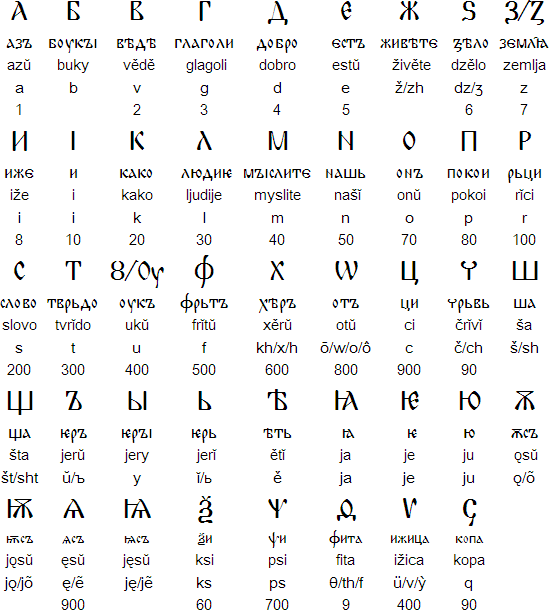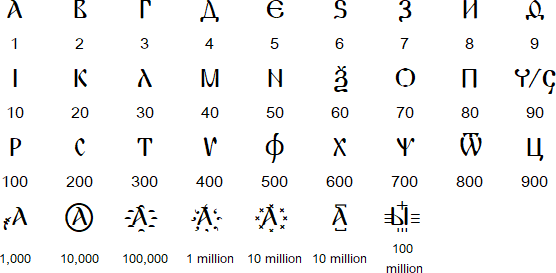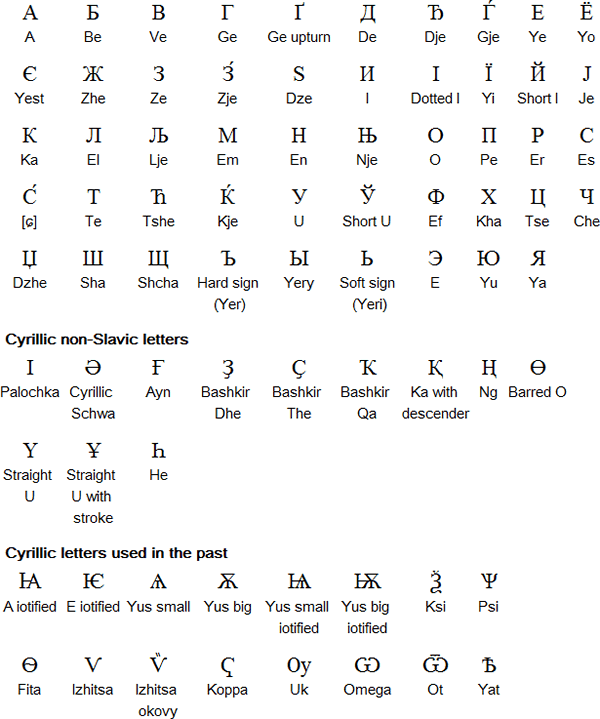The Cyrillic script is named after Saint Cyril, a missionary from Byzantium who,
along with his brother, Saint Methodius, created the Glagolitic script. Modern Cyrillic
alphabets developed from the Early Cyrillic script, which was developed during the
9th century in the First Bulgarian Empire (AD 681-1018) by a decree of Boris I of
Bulgaria (Борис I). It is thought that St. Kliment of
Ohrid, a disciple of Cyril and Methodius, was responsible for the script. The Early
Cyrillic script was based on the Greek uncial script with ligatures and extra
letters from the Glagolitic and Old Church Slavonic scripts for sounds not used in Greek.
Early Cyrillic script

Notes
- Capital and lowercase letters were not distinguished in old manuscripts
- Yeri (Ы) was originally a ligature of Yer and I (Ъ + I = Ы).
- Iotation was indicated by ligatures formed with the letter I: Ꙗ
(not ancestor of modern Ya, Я, which is derived from Ѧ), Ѥ, Ю (ligature
of I and ОУ), Ѩ, Ѭ.
- Many letters had variant forms and commonly used ligatures, for example И = І = Ї, Ѡ = Ѻ, ѠТ = Ѿ.
Cyrillic numerals
The letters also had numeric values, the order of which cames from the Greek
alphabet.

Modern Cyrillic script
This chart shows most of the Cyrillic letters currently in use, plus
ones that are no longer used, with their names.

Languages written with the Cyrillic alphabet
The Cyrillic alphabet has been adapted to write more than 50 different languages,
mainly in Russia, Central Asia and Eastern Europe. In many cases additional
letters are used, some of which are adaptations of standard Cyrillic letters,
while others are taken from the Greek or Latin alphabets.



No comments:
Post a Comment
Note: Only a member of this blog may post a comment.